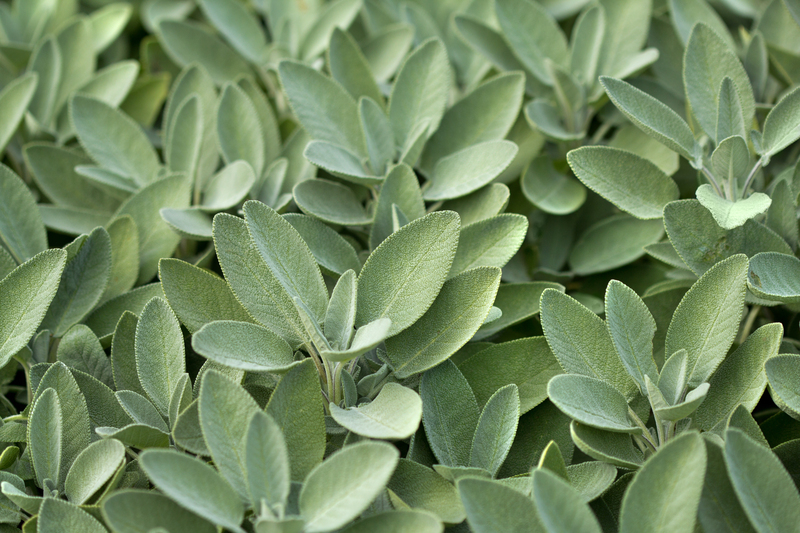Reviving Your Garden from Scratch: A Beginner's Guide
Posted on 04/07/2025
Have you ever gazed at your tired, overgrown backyard and dreamt of turning it into a lush oasis? Reviving your garden from scratch doesn't have to be overwhelming. With the right approach, even beginners can breathe life into neglected outdoor spaces. Whether you're looking to nurture a vibrant flower bed, establish a thriving vegetable patch, or simply savor the tranquility of your own green haven, this comprehensive guide will walk you through every step of starting a garden from scratch.
Understanding Your Garden's Current Condition
Before digging in, spend some time assessing your garden's condition. Knowing what you're working with is key to a successful revival. Start with a basic inspection and note the following:
- State of existing plants: Identify any healthy, salvageable plants and mark any dead, diseased, or invasive species for removal.
- Soil health: Check for compacted, sandy, or waterlogged soil. Consider performing a simple soil pH test (kits available at most garden centers).
- Sunlight patterns: Observe which areas get full sun, partial shade, or are mostly shaded. This determines where various plant varieties will thrive.
- Weeds and pests: Look for evidence of pest infestations or aggressive weeds that could impact your garden's resurgence.
- Hardscape features: Note any existing patios, paths, or fences that might influence your new layout.
Tip: Sketch Your Existing Garden
Creating a rough map of your garden can help you visualize changes. Use a notebook or a simple app to mark garden beds, existing plants, and features you aim to keep or remove.

Planning Your New Garden Layout
With an understanding of your current space, the next step to reviving your garden from the ground up is crafting a plan. Garden planning is more than aesthetics; it's about functionality and sustainability.
Key Considerations for Garden Planning
- Purpose: Do you want a flower garden, a vegetable patch, a meditation space, or a combination?
- Zones: Divide your garden into areas based on their sunlight, moisture, and intended use.
- Plant Selection: Research suitable, resilient plants for your climate and soil.
- Access: Design pathways and consider how you'll access beds for maintenance.
- Wildlife: Incorporate pollinator-friendly flowers or bird feeders if you wish to support local wildlife.
Creating a Simple Garden Design
For beginners, start simple. Choose one or two focus areas--perhaps a border of vibrant annuals or a raised vegetable bed--and build from there.
Draw a basic to-scale plan using pencil and grid paper. Mark placement for any new features, such as a compost heap, water source, or seating. Include space for composting or storage if needed.
Clearing and Prepping the Land
Cleaning up is a crucial step of starting a garden from scratch. Clearing out weeds, debris, and overgrowth sets a clean slate for your revived garden.
Essential Steps to Clear Your Garden
- Remove weeds and unwanted plants: Use a weeding fork or hand trowel to remove roots entirely. For larger areas, a hoe or garden fork aids the process.
- Prune or remove existing shrubs and trees: Cut back dead or diseased branches. Remove unwanted small trees or shrubs carefully, considering root impact on other plants.
- Collect debris: Rake up fallen leaves, trash, and old mulch. Compost anything disease-free and organic to enrich your future beds.
- Level and condition the soil: Turn over the soil with a spade or rototiller, breaking apart clumps and removing stones.
Pro Tip: Sheet Mulching for Weedy Gardens
If your garden is overrun with weeds, try sheet mulching: lay cardboard or newspaper over the area, then cover with compost or mulch. This smothers weeds and enriches the soil for new plantings in a few months.
Improving and Enriching Your Soil
Healthy soil is the foundation of every thriving garden. Even if you lack experience, learning how to amend and nourish your soil is the secret to reviving an old garden from scratch.
Steps to Revitalize Garden Soil
- Test your soil: Check pH and nutrients using a testing kit or by sending a sample to a local extension office.
- Add organic matter: Mix in compost, well-rotted manure, or leaf mold. This boosts fertility, improves structure, and enhances moisture retention.
- Avoid chemical fertilizers: For beginners, organic amendments are safer and less likely to cause nutrient imbalances.
- Mulch: Covering soil with organic mulch (wood chips, straw, or shredded leaves) retains moisture and suppresses weeds.
- Aerate: If your soil is clay-heavy or compacted, aerate with a garden fork before planting.
Note: Healthy soil teems with life
Don't be alarmed by earthworms or plenty of roots--these are signs of soil fertility. Avoid disturbing the soil more than necessary to preserve its beneficial microorganisms.
Smart Plant Selection for Beginners
When reviving a garden from scratch as a beginner, plant selection can seem intimidating. Focus on resilient, low-maintenance varieties that suit your local climate and your garden's unique conditions.
Choosing What to Grow
- Native plants: These are naturally adapted to your area and are less needy than exotics.
- Perennials: Choose perennials for long-lasting color; they return year after year with minimal care.
- Annuals for instant color: Add annuals like marigolds, zinnias, or cosmos for seasonal brightness.
- Easy edibles: Herbs (basil, thyme, chives) and quick-growing veggies (radishes, lettuce) are rewarding and beginner-friendly.
- Pollinator plants: Lavender, echinacea, and salvia attract bees and butterflies, supporting your garden's health.
Visit your local nursery for advice tailored to your region. Staff can recommend varieties that will thrive and suggest planting schedules for your area.
Planting Techniques for a Fresh Start
Knowing how to plant effectively as a beginner will give your revived garden the best chance to thrive.
Planting Steps Simplified
- Read instructions: Always check individual seed packets or plant labels for depth and spacing requirements.
- Dig proper holes: When transplanting, holes should be twice as wide as the root ball but not deeper.
- Gently remove plants: Loosen the roots of container-grown plants; avoid tearing roots unnecessarily.
- Backfill and water: Fill the hole with amended soil, press gently, and water thoroughly to eliminate air pockets.
- Mulch around plants: Leave space around stems to prevent rot.
Tip: Start Small for Big Success
Beginners often do better focusing on a modest area--maybe a single bed or a few containers--before expanding. This allows time to learn and adjust as you revive your garden step by step.
Caring for Your New Garden
The secret to a flourishing garden lies in ongoing care. Maintaining a revived garden from the start prevents old problems from resurfacing and keeps your plants in top condition.
Key Maintenance Tasks
- Water consistently: New plantings need regular watering as they adjust. Early morning is ideal to prevent disease and evaporation.
- Weed vigilantly: Hand-pull weeds when young to stop them taking over. Mulch makes this job much easier.
- Feed naturally: Apply organic fertilizers or compost tea occasionally to promote robust growth.
- Monitor for pests: Check plants regularly for signs of chewing, spots, or stunted growth. Remove pests by hand or use eco-friendly solutions like neem oil if necessary.
- Prune and deadhead: Snip faded blooms and unhealthy branches to encourage new growth and keep your garden tidy.
Design Ideas to Inspire Your Garden Revival
Inject personality into your space as you revive your garden from scratch. Experiment with color-themed borders, edible landscapes, wildlife-friendly corners, or informal cottage gardens.
Inspirational Garden Features
- Raised beds: Great for beginners, they simplify weed management and soil improvement.
- Vertical gardens: Wall planters or trellises maximize space, especially in small urban plots.
- Herb spirals and spiral beds: Combine function and form for a unique, productive feature.
- Rain gardens: Capture and filter water runoff to support pollinators and reduce erosion.
Remember, your revived garden is an expression of your creativity. Don't be afraid to try new ideas and enjoy the process!
Common Mistakes to Avoid When Reviving a Garden
Even with the best intentions, beginners sometimes fall into pitfalls. Here's what to watch out for as you start a garden from zero:
- Skipping soil preparation: Poor soil means poor results. Take time to enrich and aerate!
- Planting the wrong varieties: Avoid choosing non-native or demanding plants if you're just starting out.
- Neglecting regular care: Consistent watering, weeding, and monitoring are essential in the first year.
- Overcrowding: Give plants adequate space to grow and breathe.
- Expecting instant results: Gardens evolve over several seasons; be patient and enjoy small wins.
Sustainable Practices for Long-Term Garden Health
Every step you take while reviving your garden from the start can contribute to a more sustainable environment. Here are simple ways to make your new garden eco-friendly:
- Compost: Turn kitchen scraps and green waste into rich soil amendment for free.
- Collect rainwater: Set up a barrel to conserve water and hydrate your plants naturally.
- Limit chemicals: Practice organic gardening by using natural pest controls and soil amendments.
- Plant diversity: Grow a variety of plants to attract beneficial insects and prevent disease outbreaks.
With careful planning and eco-conscious habits, your newly revived garden can be a haven for both you and local wildlife.

Your Garden Revival Journey: Final Thoughts
Reviving your garden from scratch is both a rewarding challenge and a valuable learning experience. By following the steps outlined in this beginner's guide, you'll gain not just a beautiful new garden, but also a deeper connection to nature and a sense of accomplishment.
Remember: gardening is a journey, not a destination. Enjoy the process, celebrate small milestones, and watch as your outdoor space flourishes under your care. Before long, you'll have created your own thriving, restorative retreat--right outside your door!
Ready to Begin Reviving Your Garden?
Grab your gloves, sketch your ideas, and take the first step today. For more tips, plant recommendations, and garden inspiration, subscribe to our newsletter and join a community of thriving beginner gardeners. Happy gardening!

